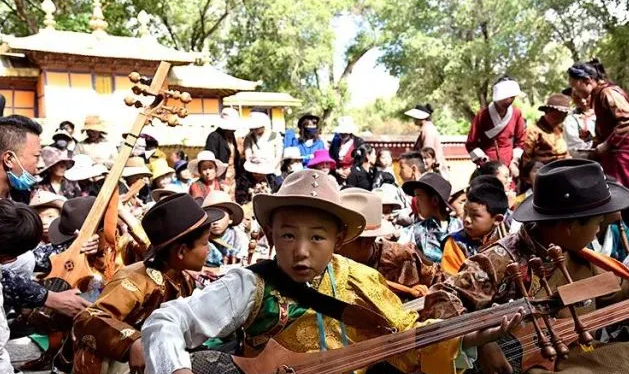Zha Nianqin's past and present
"Zha Nianqin" is a traditional Tibetan stringed instrument with a wooden body. Zha Nianqin has six-stringed qin, eight-stringed qin, sixteen-stringed qin, etc. Among them, the six-stringed qin is the most common, so it is also called "six-stringed qin" and is widely popular in Tibet, Yunnan, Qinghai, Sichuan, Gansu and other places where Tibetans live.
"Zha Nianqin" is usually made of cypress, mahogany, walnut, sandalwood, and the skin is goat skin, python skin, etc. It is often used in performances such as Tibetan singing and dancing langma and dui harmony. Among them, Zha Nianqin plays an indispensable and important role in the Tibetan art of playing and singing. In 2014, Zha Nianqin production skills were selected into the fourth batch of national intangible cultural heritage projects list.

The present inheritance and development
Today, with the improvement of material living standards, spiritual and cultural life has increasingly become a rigid demand for the public, which also makes the inheritance and development of national traditional excellent culture in an unprecedented good period. "Cultural self-confidence is a more fundamental, deeper and more lasting force in the development of a country and a nation." In the process of inheritance and development of "Zha Nianqin", a group of inheritors and promoters have also emerged.
Today, Zha Nianqin is still infiltrated in Tibetan life. There are not only many excellent Zha Nianqin artists, but also many skilled craftsmen who make Zha Nianqin. It is foreseeable that the sound of Zha Nianqin will continue to be melodious in the snowy land, and more people will be able to appreciate its charm.
 渝公网安备 50010702504639号
渝公网安备 50010702504639号